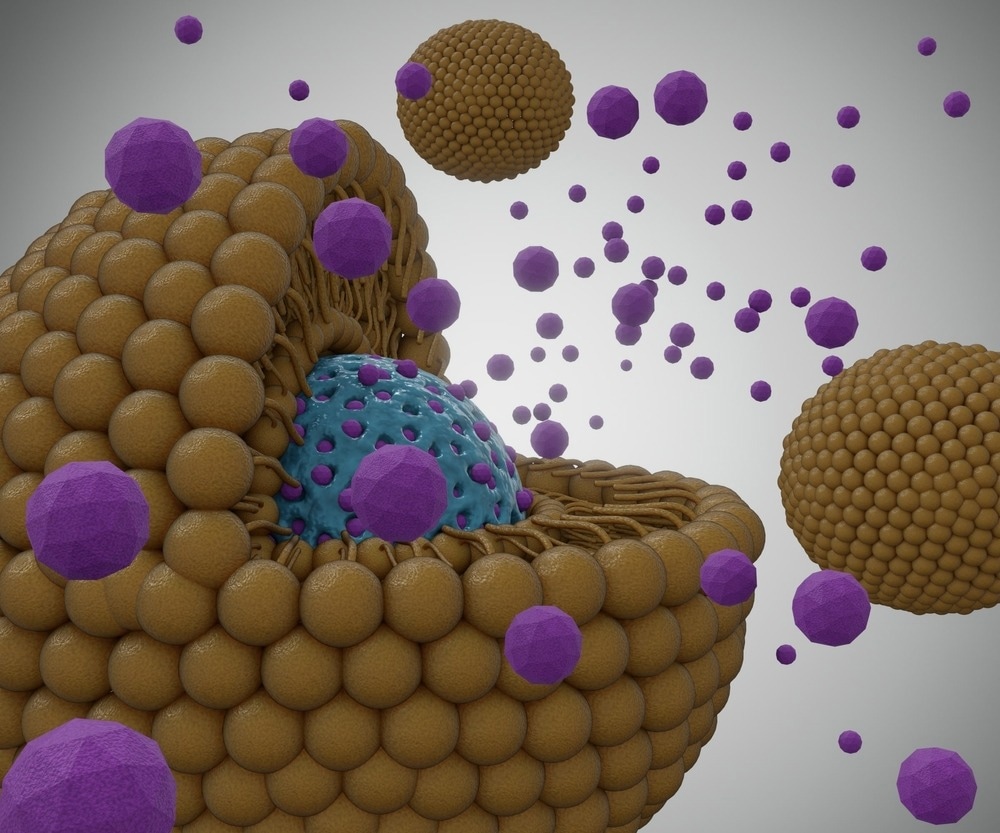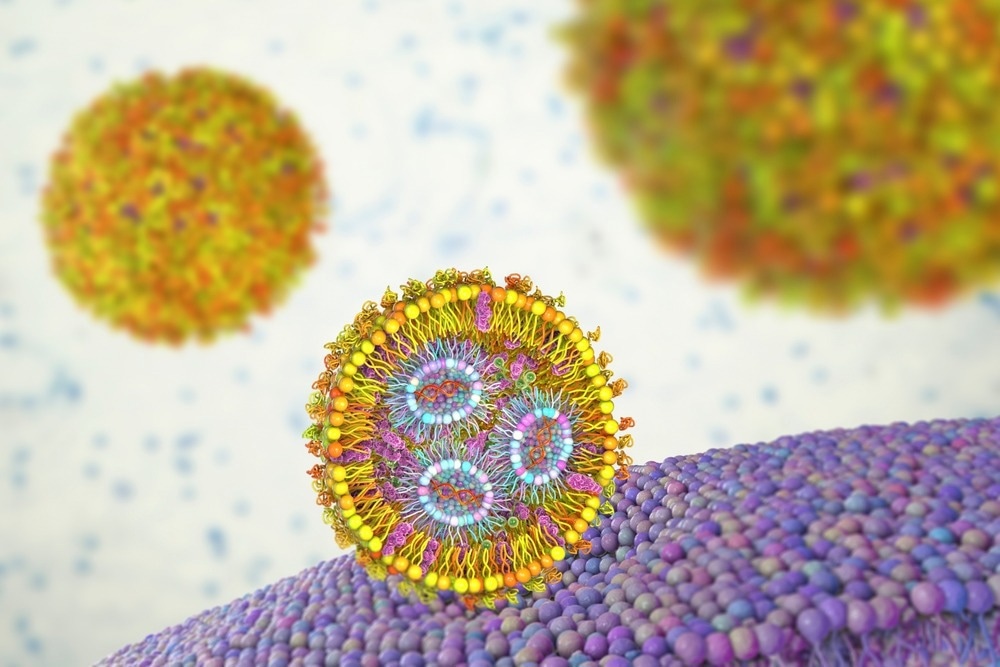Nanotechnology is an exciting field of science that has greatly contributed to the fields of computing and electronics and is now shaping the future of medicine. Here, AZoNano discusses the different types of nanoparticles.

Image Credit: Kateryna Kon/Shutterstock.com
What Are Nanoparticles?
The unique applications that nanotechnology makes possible are thanks to its leveraging different types of nanoparticles - structures of matter measuring less than 100 nanometers (nm). Since the advent of nanotechnology, researchers have realized that certain materials could exhibit different properties based on their size and shape.
Nanomaterials have specific properties that make them different from bulk materials, including a large surface area and surface to volume ratio, the ability to tailor their functionalities to various applications, and high surface energy.
Ever since carbon nanotubes, a type of nanoparticle, was discovered in 1991, many more types of nanoparticles have been discovered and leveraged by a range of industries. Some of the different types of nanoparticles are discussed below.
What Are the Different Types of Nanoparticles?
Nanoparticles can be classified according to their size, morphology, physical, and chemical properties. Often, the classification of these nanomaterials determines their function.
Carbon-Based Nanoparticles
Predominantly, carbon-based nanoparticles are split into carbon nanotubes (CNTs) and fullerenes. The use of these nanoparticles tends to focus on structural reinforcement as they are 100 times stronger than steel.
CNTs can be classified into single-walled carbon nanotubes (SWCNTs) and multi-walled carbon nanotubes (MWCNTs). CNTs are unique as they are thermally conductive along the length and non-conductive across the tube.
Fullerenes are carbon allotropes with a hollow cage structure of sixty or more carbon atoms. The structure of C60 is called Buckminster fullerenes, and resembles a hollow football.
The carbon units in these structures have a pentagonal and hexagonal arrangement. The applications of these carbon-based nanoparticles are diverse. They have many commercial applications due to their electrical conductivity, structure, high strength, and electron affinity.
So far, CNTs have been used to build transistors, aircraft, sensors and biosensors, drug delivery vehicles, batteries and other energy storage, they are also used to reinforce concrete and treat water.

Image Credit: nobeastsofierce/Shutterstock.com
Ceramic Nanoparticles
These types of nanoparticles are inorganic solids composed of oxides, carbides, carbonates and phosphates. Ceramic nanoparticles have high heat resistance and chemical inertness and have applications in photocatalysis, photodegradation of dyes, and biological imaging.
One of the most important applications of ceramic nanoparticles is in drug delivery. By controlling their specific characteristics like size, surface area, porosity, and surface area-to-volume ratio, these nanomaterials perform as good drug delivery agents. They have been used effectively as a drug delivery system for several diseases like bacterial infections, glaucoma, and cancer. More recently, scientists have developed these nanoparticles for use in bone repair.

Image Credit: Love Employee/Shutterstock.com
Metal Nanoparticles
Metal nanoparticles are types of nanoparticles prepared from metal precursors and can be synthesized by chemical, electrochemical, or photochemical methods.
In chemical methods, the metal nanoparticles are obtained by reducing the metal-ion precursors in solution with chemical reducing agents. The resultant nanomaterials can adsorb small molecules and have high surface energy.
The most common types of metal nanoparticles include silver, gold, palladium, titanium, zinc, and copper nanoparticles.
Metal nanoparticles are utilized across several research fields, including the detection and imaging of biomolecules and in environmental and bioanalytical applications. For example, gold nanoparticles are used to coat the sample before scanning electron microscope (SEM) analysis to enhance SEM and produce high-quality electron microscopy images.
Metal nanoparticles also have important applications in drug delivery when they are extensively used for a variety of therapeutic agencies, including antibodies, nucleic acids, peptides, and more.

Image Credit: Kateryna Kon/Shutterstock.com
Semiconductor Nanoparticles
Semiconductor nanoparticles are a type of nanoparticle with properties like those of metals and non-metals, and are found in the periodic table in groups II-VI, III-V or IV-VI. These nanoparticles have wide bandgaps, which upon tuning show different properties. Some examples of semiconductor nanoparticles are GaN, GaP, InP, InAs from group III-V, ZnO, ZnS, CdS, CdSe, CdTe are II-VI semiconductors and silicon and germanium are from group IV.
Semiconductor nanoparticles are applied to photocatalysis, electronics devices, nanophotonics and water-splitting applications. Modern devices such as computers, cell phones, television remote controls, satellite dishes, and fiber networks often contain semiconductor nanoparticles.
How nanoparticles could change the way we treat cancer | Joy Wolfram
Video Credit: TED/YouTube.com
Polymeric Nanoparticles
Polymeric nanoparticles are organic-based nanoparticles. Depending upon the preparation method, these types of nanoparticles have structures shaped like nanocapsules or nanospheres.
A nanosphere nanoparticle has a matrix-like structure, whereas nanocapsules have core-shell morphology. In nanosphere polymeric nanoparticles, the active compounds and the polymer are uniformly dispersed, while in nanocapsule nanoparticles, the active compounds are confined and surrounded by a polymer shell.
Some advantages of polymeric nanoparticles include controlled release, protection of drug molecules as they travel within the internal and external environment, the ability to combine therapy and imaging, and specific targeting.
Polymeric nanoparticles have applications in drug delivery and diagnostics. Drug delivery systems with polymeric nanoparticles have the benefit of being highly biodegradable and biocompatible.
Lipid Nanoparticles
Lipid nanoparticles are generally spherical, with a diameter ranging from 10 to 100nm. Their structure consists of a solid core made of lipids and a matrix containing soluble lipophilic molecules, and surfactants and emulsifiers stabilize the external core.
This type of nanoparticle has applications in the biomedical field as drug carriers and RNA release in cancer therapy. In particular, they have been successful in transporting drugs and oligonucleotides that are poorly water-soluble in gene therapy applications.

Image Credit: Kateryna Kon/Shutterstock.com
Impact of Nanoparticles on the Future of Nanotechnology
The different types of nanoparticles that have been discovered and explored have been a significant driver behind the expansion of nanotechnologies, establishing life-saving innovations in drug delivery, as well as improving the efficiency of a myriad of processes.
As the field of nanotechnology advances, the construction and synthesis of functional nanoparticles for applications across the pharmaceutical, energy generation, electrical, computing, and chemical engineering sectors will continue. In the future, we will likely see more applications of different types of nanoparticles emerge, with a key focus on medical applications.
This article was updated June 2023.
References and Further Reading
Chandrakala, V., Aruna, V. and Angajala, G. (2022) “Review on metal nanoparticles as Nanocarriers: Current challenges and perspectives in Drug Delivery Systems,” Emergent Materials, 5(6), pp. 1593–1615. Available at: https://doi.org/10.1007/s42247-021-00335-x.
Crucho, C. and Barros, M., (2017) “Polymeric nanoparticles: A study on the preparation variables and characterization methods,” Materials Science and Engineering: C, 80, pp.771-784. Available at: https://doi.org/10.1016/j.msec.2017.06.004
Khan, I., Saeed, K. and Khan, I., (2019) “Nanoparticles: Properties, applications and toxicities,” Arabian Journal of Chemistry, 12(7), pp.908-931. Available at: https://www.sciencedirect.com/science/article/pii/S1878535217300990.
Musielak, E., Feliczak-Guzik, A. and Nowak, I. (2022) “Synthesis and potential applications of lipid nanoparticles in medicine,” Materials, 15(2), p. 682. Available at: https://doi.org/10.3390/ma15020682.
Thomas, S., Harshita, B., Mishra, P. and Talegaonkar, S., (2015). "Ceramic Nanoparticles: Fabrication Methods and Applications in Drug Delivery,” Current Pharmaceutical Design, 21(42), pp.6165-6188. Available at: https://doi.org/10.2174/1381612821666151027153246.
Disclaimer: The views expressed here are those of the author expressed in their private capacity and do not necessarily represent the views of AZoM.com Limited T/A AZoNetwork the owner and operator of this website. This disclaimer forms part of the Terms and conditions of use of this website.